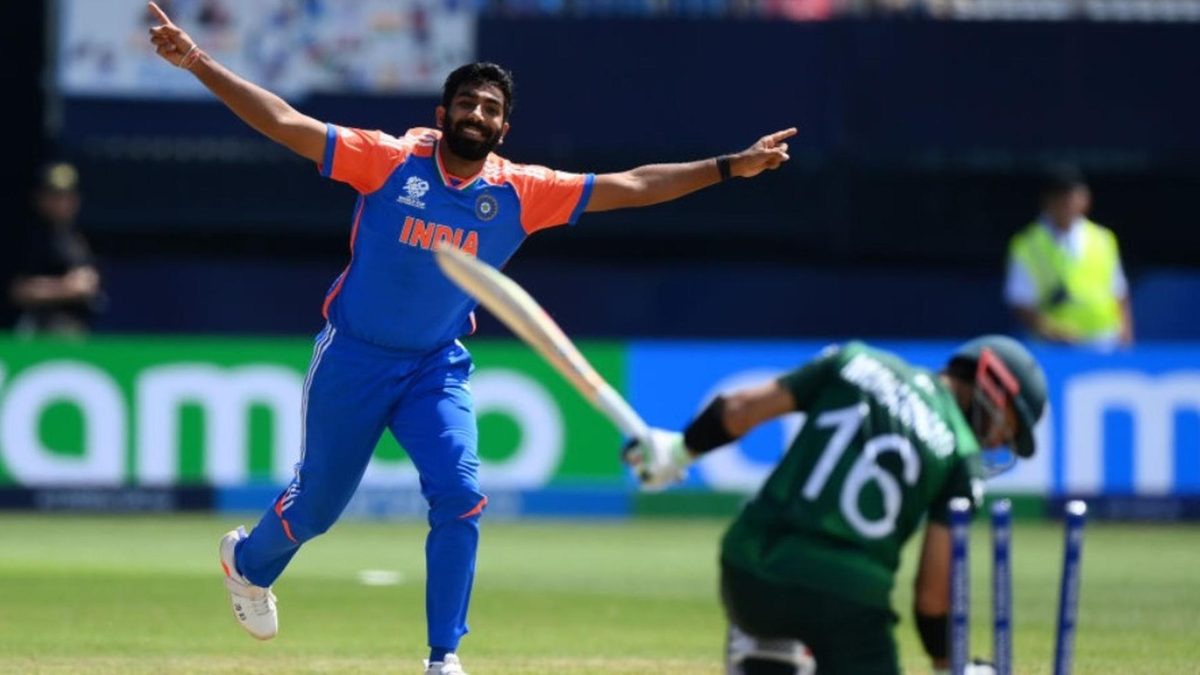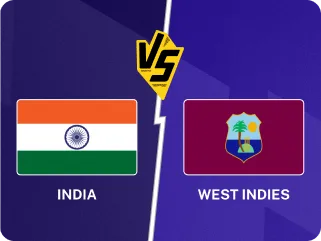
By definition, a defending side can win limited overs matches in one of two ways: either by bowling out the opposition or by restricting them below the target. The two methods feed off of each other. Wickets stem the run flow, while keeping runs down increases the probability of wickets falling as the pressure mounts. Striking the optimum balance between the two – based on conditions – is the goal of every fielding side.
The longer the duration of the game, the more that balance tilts towards searching for wickets. Batting sides can wait out a period of slower scoring, confident in the knowledge that, with wickets in hand, they can catch up later.
T20s, forty per cent of the length of 50-over games, have different dynamics. The pressure built on the batting side in T20s after two cheap overs is of significantly higher magnitude than in fifty-over cricket. However, much of T20 cricket is judged through the same lens as the 50-over game, from which it was derived more than two decades back.
Until recently, batting averages used to be given greater importance than they should have, while strike rates used to be called overrated by some of the most esteemed batters around the world. The evolution on the bowling front has been even slower. The idea that bowling to minimise runs can be more productive than bowling to take wickets is frowned upon at best, and dismissed at worst.
What do we mean by bowling to take wickets? There are two things at play here. A bowler can go searching for a ball that is hard to play conventionally, or else invite an attacking stroke which a batter then misjudges. Often these go hand in hand. Think of a swing bowler pitching the ball up, inviting the drive but also maybe piercing the defences. Or a wrist-spin bowler tossing the ball up, putting as much action as possible, hoping for big turn whether or not the batter’s eyes light up.
Conversely, there are lengths that are harder to attack, but that are also less likely to break through by themselves. Just short of a good length, generally. But these can lead to wickets too. Eventually, a batting side will have to take a risk against a ball not there for it. Or else, they might mis-identify an opportunity to attack in their desperation to score.
In a string of recent social media posts, R Ashwin explained how, in his view, “wicket taking is overrated in T20 cricket”.
“Wicket taking is overrated in T20”
— Ashwin 🇮🇳 (@ashwinravi99) June 10, 2024
Very often when I have said this, people tend to slide into mock it.
“In T 20 wickets happen and how!! is totally dependant on the entry point of the bowler and of course the ability to execute apt skills in that over or ball like Bumrah did… pic.twitter.com/mX9o8YZrE5
“Very often bowlers search for wickets at faulty times thinking it’s an aggressive option, hence denying his/her team mate the pressure pocket for the next over,” Ashwin wrote on X. “The process of wickets happening is beyond just one bowler,” he added later.
Wickets happen in T 20 s.
— Ashwin 🇮🇳 (@ashwinravi99) June 10, 2024
Pockets of taking are few and the process of wickets happening is beyond just one bowler.
Ashwin took only nine wickets in IPL 2024 with a wicket only every 36.7 balls, his second-worst strike rate in a season. Almost everyone, ranging from fans to former greats of the game felt that it was one of his worst seasons. But Rajasthan Royals understood the wider impact of Ashwin’s defensive bowling and kept persisting with him.
His economy of 8.49 was the second-best for any off-spinner who bowled more than 20 overs in the tournament after Sunil Narine’s 6.69. Overall, spinners conceded 8.69 runs per over in the season, while right-arm spinners went for 8.89 runs per over.
Ashwin might not have been picking loads of wickets – he wasn’t looking to – but he was building pressure and increasing the chances for his teammates to do so. If enough bowlers bowl not to look for wickets, but to make it slightly easier for the next bowler, wickets will be a natural byproduct for the team. Or in Ashwin’s words, they will naturally “happen”.
Still, the old orthodoxy takes time to shift, especially when it comes to low totals. If a team only needs a run a ball, then there is no risk required, the argument goes, and so a bowling side must try and push the game on themselves. The ongoing T20 World Cup offers evidence that, even in these cases, bowling dry is the way to go.
--------
The 2024 T20 World Cup has been a fresh (or dull, based on your preference) change from two months of IPL slam-bang where runs were being scored at an unprecedented rate. Four of the five lowest totals defended in men’s T20 World Cup history have come in this edition.
We’ll pick two of those games - which won’t be forgotten anytime soon - where the contrasting strategies of defending teams brought contrasting results.
Both involved Pakistan, who needed 48 from 48 balls with eight wickets in hand chasing 120 against India in New York, and had 45 off 30 to defend with seven wickets to take against USA in Dallas.
For India, with a run a ball required in eight overs, the temptation must have been high to go for the all or nothing punt of pitching up or bouncing batters out. After all, that is what conventional wisdom suggests in down-and-out situations like these: take the risk, go for the wicket-taking options. If you get hit, you get hit, you’re losing the game anyway.
India did not get sucked into that theory. Instead, they went on the defensive.
Good length (6-8 metres) and hard length (8-10 metres) were the most economical lengths for pacers at the Nassau County Stadium in the T20 World Cup, with run rates of 3.71 and 4.75 respectively.
The Indian seamers bowled 17 of the next 24 balls in this 6-10 metre zone. They tried the bouncer, the ball that has fetched wickets most often (9.3 balls per wicket) at the venue, only five times, while only twice did they land fuller than a good length.
Even Axar Patel, who bowled the 16th over, sent down three deliveries at a back of length (5-6 metres for spinners), and two short deliveries (beyond 6 metres); again, the two most economical lengths for spinners in New York (4.46 and 5.86 an over respectively). Just 15 runs were conceded in this stretch.
On the other hand, when Pakistan's Shadab Khan came on to bowl the 16th over against the USA, he took the aggressive route.
Dallas had better surfaces than the New York minefields, albeit tougher than the typical IPL venue this year. An asking rate of 9-10 an over at the death was achievable. As a leg-spinner defending 45 off 30 with seven wickets left, going for wickets was too tempting an option for Shadab not to take.
The over's first four balls were either overpitched (1.5-3 metres) or on a good length (3-5 metres). These were the two most expensive lengths for spinners at this venue (run rates of 9 and 8.2 respectively). Off those four balls, USA scored ten runs.
For the last two balls, Shadab pulled his length back – 5.48m and 6.07m – giving away just one more run. The damage, however, had been done. USA’s equation was down to 34 off 24 with the same number of wickets in hand as they started the 16th over with.
Had Shadab bowled back of length (run rate of 6.87) or shorter (6.67) throughout the over, things might have turned out differently. The six he conceded off the fourth ball could have been a single, and the weight of the extra few runs could have led the USA batters to take on low-percentage options in the next over, resulting in wickets.
As it turned out, USA were able to score only six off the next over by Naseem Shah, yet managed to win the game (in the super over) in the end.
To use Ashwin’s phrasing, Shadab “searched for wickets” at a “faulty time” in the match, resulting in his teammate not getting the benefit of the “pressure pocket for the next over”. The ripple effect it had is for everyone to see. Pakistan tied the game, then they lost it, and then they found themselves out of the World Cup.
India, on the other hand, kept chugging away, one boundary-less delivery after the other, snatching the match from right under Pakistan’s nose. Hardik Pandya and Arshdeep Singh, who bowled the 13th and the 14th overs, conceded just eight runs to give Jasprit Bumrah the same pressure pocket that Shadab failed to give Naseem.
Bumrah pegging back Mohammad Rizwan’s off-stump is one of the great World Cup moments, and it was hailed as one of the great World Cup balls. But if you watch it back, in some ways, it is nothing special. Well-directed and hard to hit, but not unplayable. But Rizwan felt he had to go, swung across the line, and paid the price. This was a prime example of a “wicket happening”. Pakistan lost only three more wickets, but couldn’t find the boundary again until the second half of the final over. India had won, and Pakistan were all but out of the World Cup.
Ball-tracking data via CricViz
Follow Wisden for all T20 World Cup updates, including live scores, match stats, quizzes and more. Stay up to date with the latest cricket news, player updates, team standings, match highlights and video analysis.








